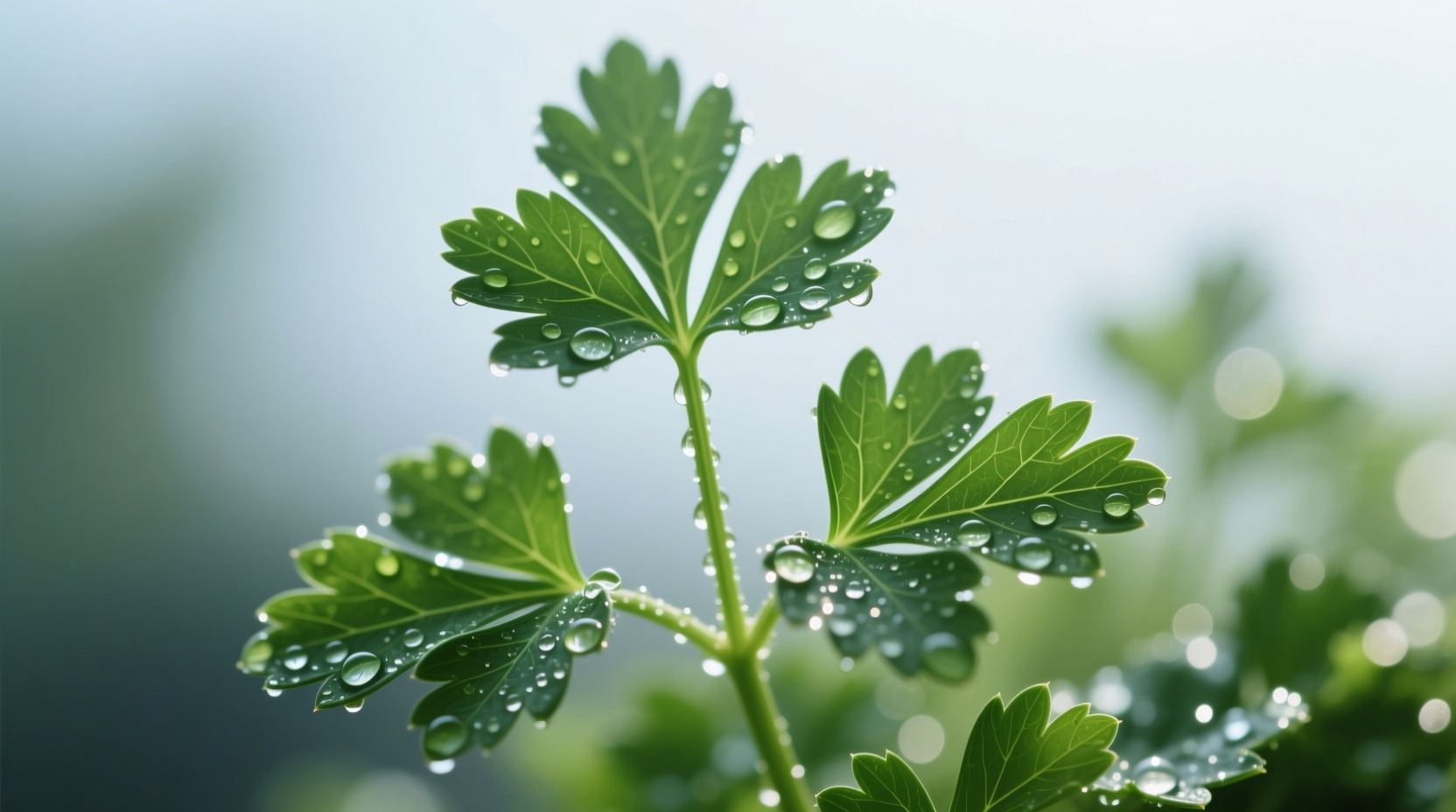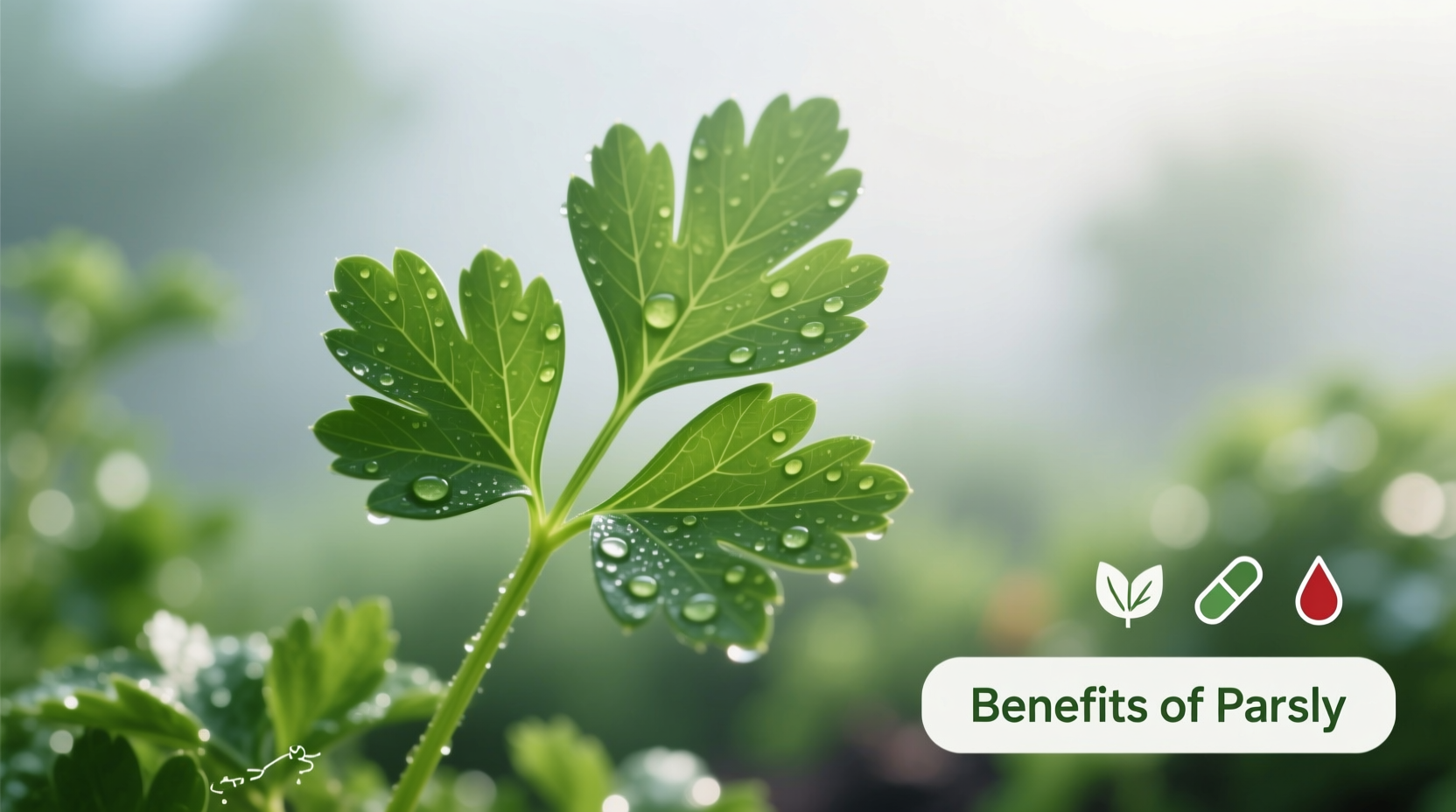Often dismissed as mere garnish, parsley packs a powerful nutritional punch that deserves a starring role in your kitchen. This unassuming herb contains remarkable concentrations of essential vitamins and phytonutrients that contribute to multiple aspects of health. Let's explore why you should reconsider parsley's place in your daily meals.
Nutritional Powerhouse in Every Sprig
What makes parsley stand out among culinary herbs? Its extraordinary nutrient density. Unlike many herbs used primarily for flavor, parsley delivers substantial nutritional benefits even in small quantities. Just two tablespoons of fresh parsley provides:
| Nutrient | Amount per 2 Tbsp | Daily Value % |
|---|---|---|
| Vitamin K | 73 mcg | 81% |
| Vitamin C | 13 mg | 14% |
| Vitamin A | 282 mcg | 31% |
| Folate | 17 mcg | 4% |
| Iron | 0.4 mg | 2% |
According to USDA FoodData Central, parsley contains significantly higher concentrations of vitamin K than most leafy greens. This nutritional profile explains why nutritionists increasingly recommend incorporating more parsley into daily meals rather than discarding it as decoration.
Science-Backed Health Benefits You Can't Ignore
Supports Optimal Bone Health
Vitamin K plays a crucial role in bone metabolism by activating osteocalcin, the protein that binds calcium to bone matrix. Research published in the American Journal of Clinical Nutrition demonstrates that adequate vitamin K intake correlates with reduced fracture risk and improved bone density, particularly in postmenopausal women. With its exceptional vitamin K content, parsley serves as a valuable dietary source for maintaining skeletal strength.
Powerful Antioxidant Protection
Parsley contains unique flavonoids like apigenin and luteolin that combat oxidative stress. A 2022 study in Antioxidants journal identified parsley as having one of the highest total antioxidant capacities among common culinary herbs. These compounds neutralize free radicals that contribute to chronic inflammation and cellular damage. The herb's vibrant green color comes from chlorophyll, which also demonstrates protective properties against certain carcinogens.

Cardiovascular Support System
The combination of vitamin C, vitamin K, and potassium in parsley creates a synergistic effect for heart health. Vitamin K helps prevent calcium buildup in arteries, while potassium regulates blood pressure. Research from the National Institutes of Health indicates that diets rich in vitamin K2 (which parsley provides in the K1 form that converts to K2) associate with lower risks of cardiovascular disease. The folate content also helps regulate homocysteine levels, an independent risk factor for heart problems.
Maximizing Parsley's Benefits in Your Kitchen
Preparation Methods That Preserve Nutrients
How you handle parsley significantly impacts its nutritional value. Unlike many vegetables, parsley's nutrients remain stable through various preparation methods:
- Raw consumption: Provides maximum vitamin C retention
- Light cooking: Brief steaming preserves most nutrients while enhancing carotenoid absorption
- Cold infusion: Creating parsley ice cubes preserves nutrients for later use
- Avoid boiling: Extended boiling leaches water-soluble vitamins
Professional chefs recommend adding parsley at the end of cooking to preserve its delicate flavor compounds and nutritional integrity. The essential oils containing many beneficial compounds are volatile and dissipate with prolonged heat exposure.
Strategic Pairings for Enhanced Absorption
Combine parsley with these ingredients to boost nutrient uptake:
- Lemon juice: The vitamin C dramatically increases iron absorption from the parsley
- Healthy fats: Olive oil or avocado helps absorb fat-soluble vitamins A, E, and K
- Garlic: Creates synergistic antioxidant effects through allicin compounds
Important Considerations for Safe Consumption
Who Should Moderate Intake
While parsley benefits most people, certain individuals should monitor their consumption:
- Those on blood thinners: Vitamin K affects blood clotting; consistent moderate intake is preferable to large fluctuations (per Mayo Clinic guidelines)
- Pregnant women: Large medicinal quantities may stimulate uterine contractions
- Kidney stone sufferers: Parsley contains oxalates that may contribute to stone formation in susceptible individuals
The FDA considers culinary amounts of parsley safe for general consumption. As registered dietitian Sophie Dubois explains, 'The key is regular moderate use rather than occasional large doses. Incorporating two tablespoons daily into your meals provides benefits without risks for most people.'
Quality Matters: Fresh vs. Dried
Fresh parsley delivers significantly higher nutrient levels than dried varieties. A comparative analysis by the Journal of Agricultural and Food Chemistry found fresh parsley contains up to 50% more vitamin C and flavonoids than its dried counterpart. For maximum benefit, select vibrant green sprigs with crisp stems and store them in water in the refrigerator for up to one week.
Practical Ways to Incorporate More Parsley
- Create parsley pesto as a nutrient-dense alternative to basil pesto
- Add to morning smoothies (the chlorophyll content provides gentle detoxification)
- Make parsley tea by steeping fresh sprigs in hot water for 5-7 minutes
- Blend into salad dressings for added nutrition without altering flavor significantly
- Use as a base for vegetable stocks instead of discarding stems
Professional chefs recommend using the entire plant - stems contain concentrated nutrients and add depth to sauces and stocks. Don't waste this nutritional powerhouse by treating it as mere decoration.











 浙公网安备
33010002000092号
浙公网安备
33010002000092号 浙B2-20120091-4
浙B2-20120091-4